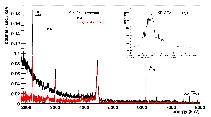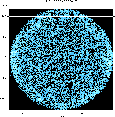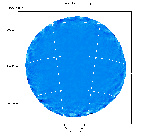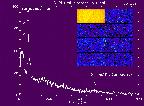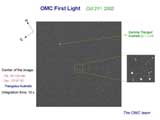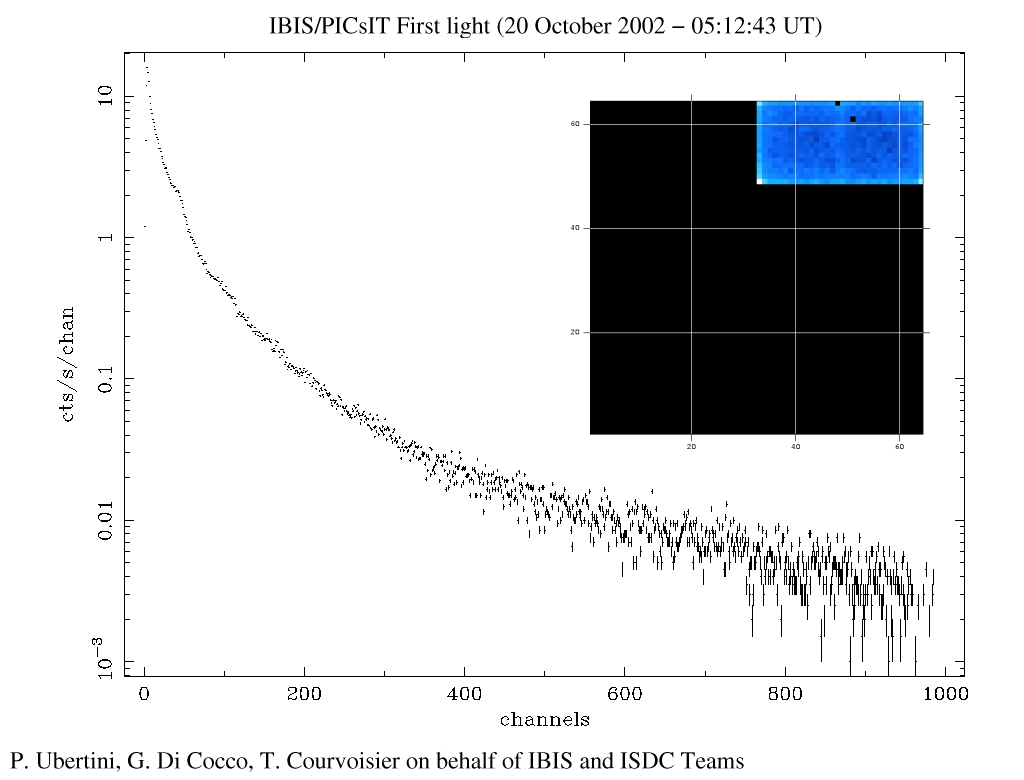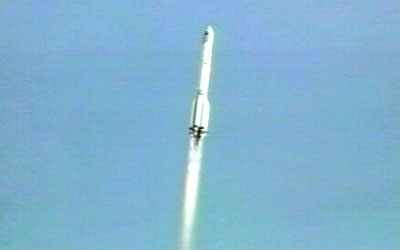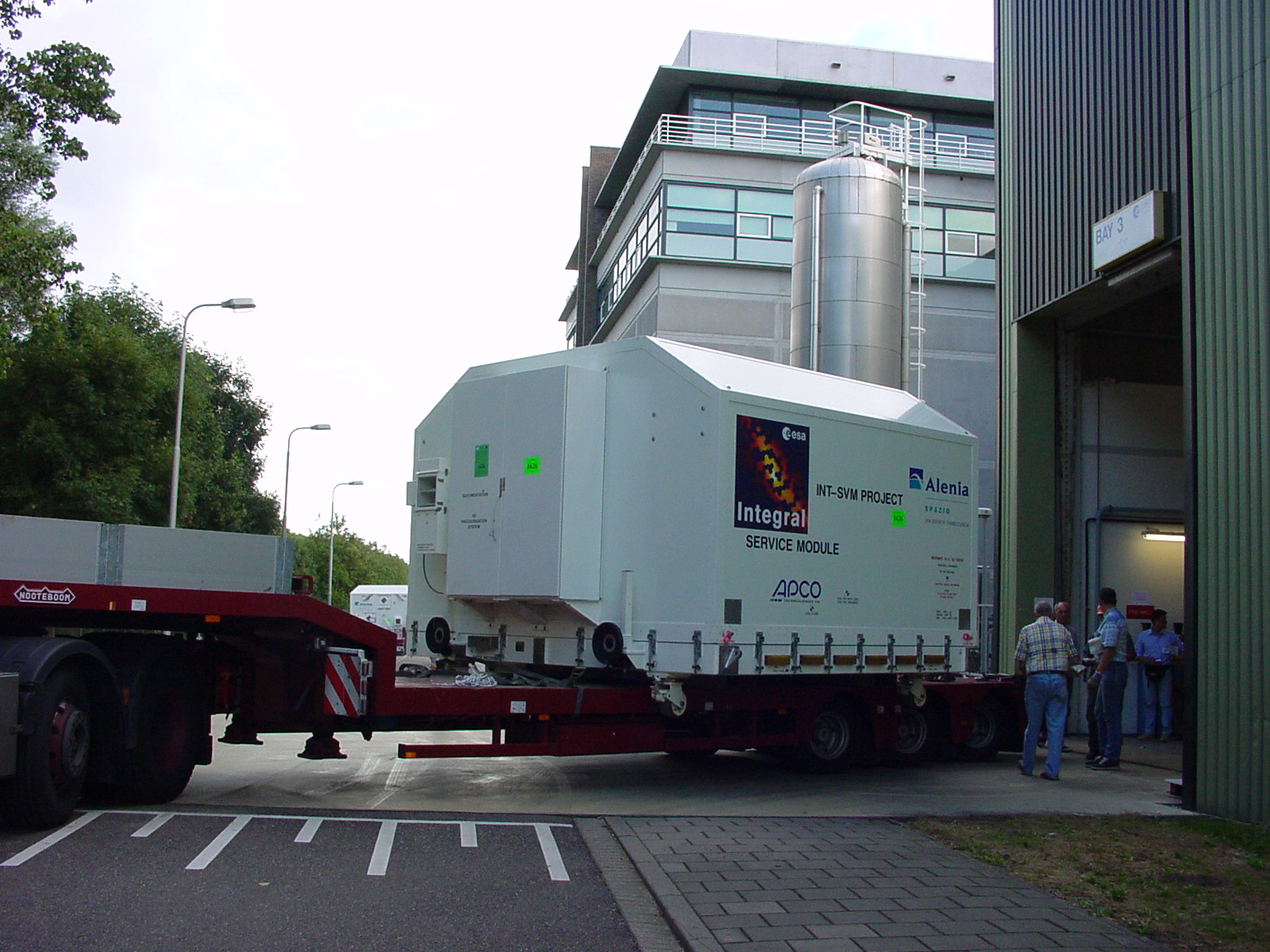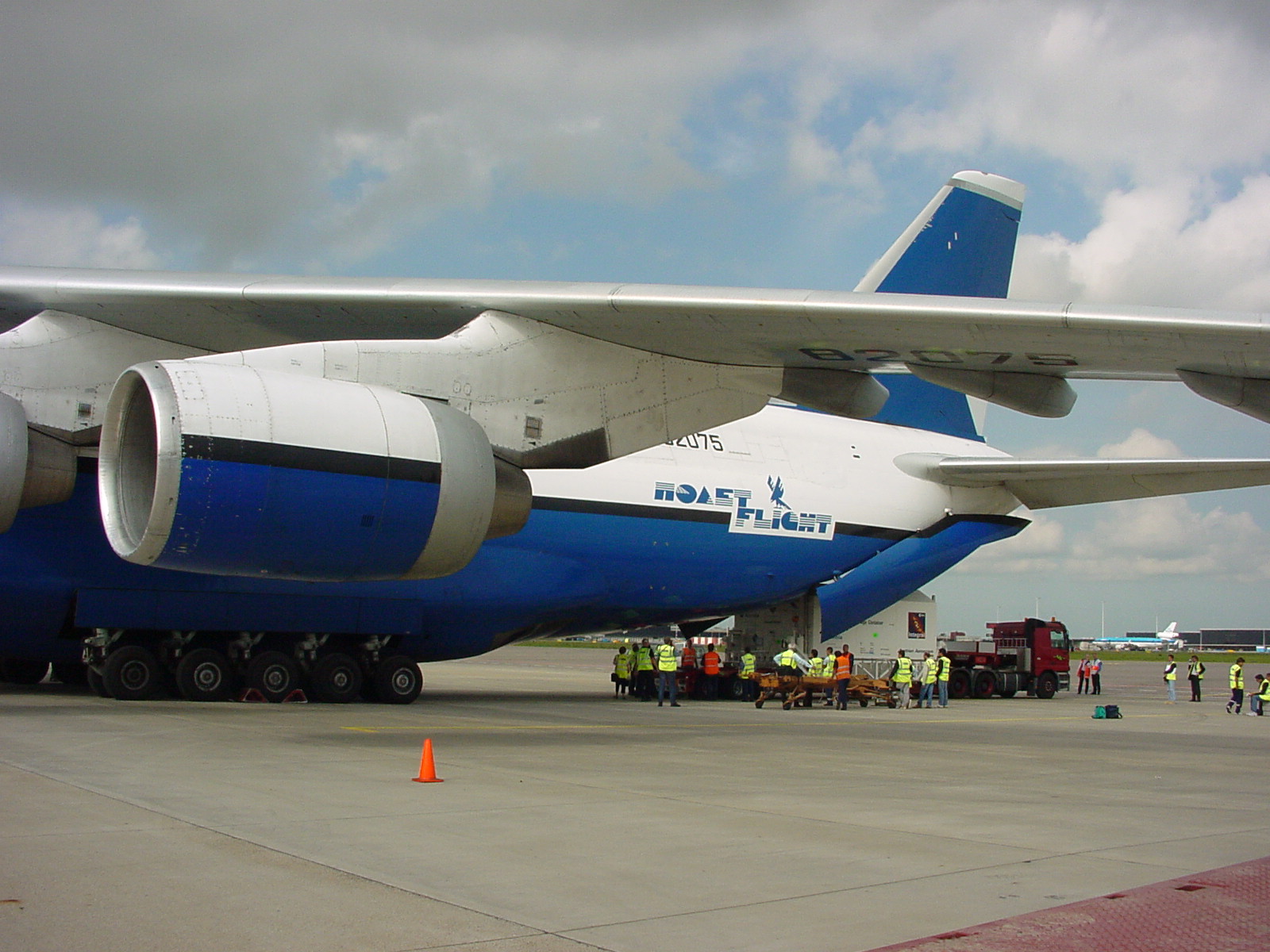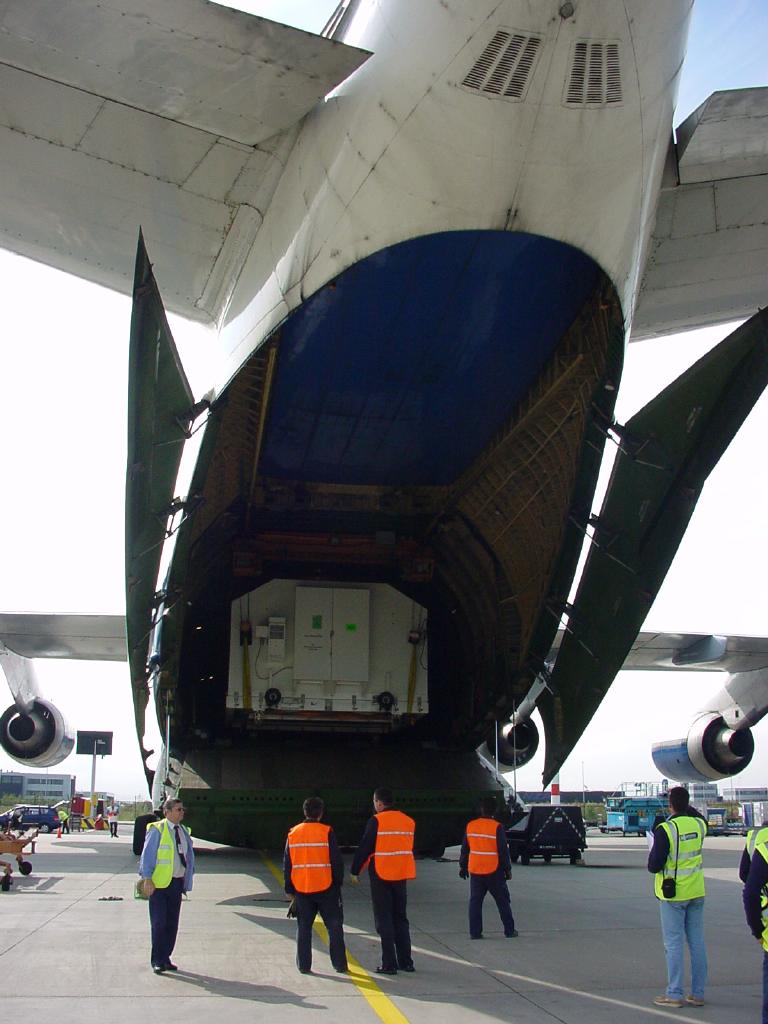INTEGRAL News Archive for 2002 - INTEGRAL
INTEGRAL News Archive for 2002
Integral's first look at the gamma-ray Universe
18 December 2002 ESA's gamma-ray satellite, Integral, is fully operational. Today Integral's first ground-breaking images of the high-energy Universe were presented in Paris, France. Astronomers call such initial observations 'first light'.
For more information, see the ESA Information Note Nr. 10-2002

The INTEGRAL ISOC Newsletter #6 is available
18 December 2002 ISOC Newsletter #6

ESA presents Integral's first images
11 December 2002 Integral, the European Space Agency's gamma-ray satellite, has taken its first images and collected its first scientific data. These "first-light" images confirm that Integral is working superbly. Everyone involved with the project is delighted with its performance so far.
Professor David Southwood (ESA Director of Science), Dr Arvind Parmar (Integral's Acting Project Scientist), and the Principal Investigators will be presenting Integral's first ground-breaking images and results at a press conference on 18 December at ESA Headquarters in Paris, France.
For more information, see the ESA Press Relesase Nr. 79-2002

Integral localizes a long GRB (GRB 021125)
26 November 2002 A. Bazzano, A. Paizis, and the INTEGRAL Science Team report in GCN Circular 1706 the detection of GRB021125 at 17:58:30 UTC with a duration of 20 sec in the IBIS field of view with the ISGRI and PICsIT detectors. The event is confirmed by the SPI anticoincidence system. The burst peak intensity was about 2-4 Crab in the energy range 15-120 keV.
Also Ulysses, Mars Odyssey-HEND, RHESSI (GCN Circular 1707) and Konus (GCN Circular 1709) observed this GRB.
- A map showing the various triangulation annuli (GCN Circular 1707 & 1709) and the Integral preliminary error circle 30 arcmin (from http://sunspot.ssl.berkeley.edu/ipn3/021125/)
Courtesy: K. Hurley, et al.

First astronomical images obtained by IBIS and SPI
17 November 2002 During the night from 16 to 17 November, INTEGRAL has been pointed towards Cygnus X-1 as a target for SPI commissioning phase using a hexagonal dithering pattern. IBIS and SPI have obtained their first astronomical images.
- IBIS (ISGRI) image, (14-40) keV, ~ 30 min exposure
- IBIS (ISGRI) image, (40-100) keV, ~ 30 min exposure
- SPI image (25 - 45) keV, ~ 60 min exposure
Courtesy: P. Ubertini, F. Lebrun, G. DiCocco and the IBIS team & J. -P. Roques and the SPI team

SPI detection of gamma-ray line emission correlated with a solar proton flare
13 November 2002 The SPI telescope aboard INTEGRAL has detected during the period from 9-Nov-2002 (12:00) and 11-Nov-2002 (12:00) a considerable increase of gamma-ray line emission in the energy range 2-8 MeV. In particular, broadened and shifted gamma-ray lines have been observed around 2216 keV, 3009 MeV, and 4452 keV. Increased but narrow gamma-ray line emission has also been seen at 6129 keV.
The increase of gamma-ray line flux is correlated with an increase of the SPI anticoincidence (ACS) overall counting rate, and an increase of the 1-100 MeV proton flux as seen by GOES8 (see http://www.lmsal.com/solarsoft/last_events).
The origin of the gamma-ray lines is not fully understood so far, yet the measurements impressively demonstrate the capacity of SPI to perform detailed studies of gamma-ray line profiles. For example, the spectrum at 2.2 MeV is composed of a narrow instrumental background line at the rest energy of the deuterium line (2223 keV), and a broadened and possible redshifted line with a mean energy of 2216 keV and a width of 16 keV (FWHM). Subtracting off the instrumental background removes the narrow deuterium line and reveals the excess emission during the flare period.
A more detailed study of the event and a more refined analysis of the data, which were acquired only 5 days after the switch-on of the SPI Germanium camera, is in progress.
Courtesy: Juergen Knoedlseder (CESR Toulouse) and the SPI team (13-Nov-2002)

First performance results from SPI
11 November 2002 During temperature stabilisation process of the Germanium detectors, spectra from SPI have been obtained at HV of 4000 V. The energy resolutions of all detectors are nominal except for detector #15 which is slightly worse: At the 1117.1 keV Ge69 background line the energy resolutions for 18 out of 19 detectors vary between 2.29 keV and 2.65 keV FWHM. Detector #15 has not yet the nominal energy resolution (i.e. still 3.25 keV) which will be improved by lowering the HV.
The spectrum for detector #0 (2.47 keV resolution @ 1117.1 keV) is shown here.
Courtesy: J.-P. Roques and the SPI team

Full IBIS activation completed
08 November 2002 Full IBIS nominal activation was completed 06 November. The IBIS parameter optimisation phase is planned to continue for the next days. IBIS is now working in standard mode, with veto HV switched on, PICSIT and ISGRI in nominal.
Click here for pictures showing
- IBIS/Veto system, module VDM-09, spectrum with 511 keV line
- IBIS first full activation: PICSIT detection plane image with all the modules vetoed:
- energy range ~180 keV- 5 MeV (collected November the 7th)
Courtesy: P. Ubertini, F. Lebrun, G. Di Cocco on behalf of the IBIS Team

SPI Ge detector temperature of 90 K
06 November 2002 has beeen reached early morning of 06 November. The energy resolution of the SPI Ge detectors at 4000V are nominal except detector 15 which is slightly worse. The HV of detector 15 will be adapted in order to find the best compromise.
.... more

Final operational orbit
01 November 2002 After having successfully completed all orbit transfer maneouvres the final mission orbit has been obtained with perigee height of 9049.6 km and apogee height of 153657.2 km, inclination 52.246 degree.

First GRB detected by the SPI anti-coincidence system
30 October 2002 On October 27, 2002 around 8:34 UT the anti-coincidence subsystem (ACS) of the INTEGRAL-spectrometer SPI has observed its first gamma-ray burst (GRB). It could be seen already in the overall counting rates of the anticoincidence subsystem (ACS) of SPI with 50 ms time resolution (see figure 1 of the attachment). Calculating the average over 10 time bins the burst becomes clearly visible (see figure 2 of the attachment. The time of the rise of the GRB is identical to the time of the burst GRB 021027 reported by the GCN. So we are confident that the ACS of SPI has detected its first GRB! This detection shows that the ACS works as expected and is able to trigger on GRBs. The SPI team considers this as a great success.
Courtesy: A. v. Kienlin (MPE Garching) and the SPI team.

First light data from the second JEM-X detector (JEM-X-2).
29 October 2002 First shadowgram obtained with JEM-X unit #2. Data show the expected smooth shape with rim brigthening and gaps from calibration sources. Here you can also obtain the first deconvolved images from JEM-X 2 (empty sky region) and binned detector spectra, showing the spectral evolution with increasing high voltage.
Courtesy: Niels Lund (DSRI/Copenhagen) and Peter Kretschmar (ISDC/Geneva)

First light data from the first JEM-X detector (JEM-X 1).
27 October 2002 First deconvolved image from JEM-X (1). Since the pointing was done on a practically empty field, with just a few very weak sources, no sources are detected in the ~ 2000 sec exposure.
Courtesy: Niels Lund (DSRI/Copenhagen) and Peter Kretschmar (ISDC/Geneva)

First light data from the low energy detector array ISGRI of the IBIS imager
25 October 2002 For thermal uniformity reasons, all 8 modules were powered but only one module (shown in yellow) was biased to -120 V for about one hour. The module temperature was around -10°C. On the picture one notes the good uniformity of the active module and in the spectrum the W and CsI (probably) fluorescence lines as well as a weak 511 keV line due to the calibration source. The threshold was very low (close to 10 keV), it results in part from the exceptionally low temperature.
This tests demonstates the excellent performance of ISGRI.
Courtesy: Francois Lebrun (CEA/Saclay), More info:
http://www-dapnia.cea.fr/Phys/Sap/Actualites/Depeches/126/depeches_dpy_win.php
Note that regular updates on IBIS can be found on the IBIS Homepage (IAS, Roma)

First light image from the Optical Monitor Camera (OMC) on-board INTEGRAL
24 October 2002
Courtesy: Miguel Mas-Hesse (LAEFF/INTA).For more information please see the OMC First Light page at LAEFF/INTA.

First light data from the high energy detector array PICSIT of the IBIS imager
20 October 2002 The first light image is showing the first shadowgram of the detector module 1 of IBIS/PICsIT and the spectrum of single events of the same module.
Courtesy: P. Ubertini, G. Di Cocco, T. Courvoisier on behalf of IBIS and ISDC Teams.

18 October 2002 (II) Integral early operations continue very smoothly.

18 October 2002 (I) SPI and JEM-X digital electronics boxes were powered up as timelined. Integral is in inertial pointing now and will do a slew to the outgassing attitude later today.

Integral was succesfully launched at 06:41 from Baikonour
17 October 2002 Solar panels were deployed succesfully. Integral is safe and in a stable configuration

4th stage with INTEGRAL mated with PROTON launcher
10 October 2002

Initial perigee height updated to 9.000 km
17 September 2002 The Flight Acceptance Review Board recommended in July that the INTEGRAL Science Working Team re-assesses the perigee height of the INTEGRAL orbit. It was decided to change the baseline orbit and lower the perigee height by 1.000 km from 10.000 km to 9.000km. The expected increase in the radiation environment is insignificant and will not adversely affect the scientific products. The lowering of the perigee will however save a substantial amount of fuel (20 kg equivalent to 2-3 years of operation) and thus provide a healthy margin in the fuel budget.

INTEGRAL shipment to Baikonur
23 August 2002 Today, the INTEGRAL spacecraft was transported from ESTEC to Amsterdam Schiphol Airport where it left for Baikonur on-board a Russian Antonov 124
INTEGRAL Flight Acceptance Review completed
19 July 2002 Today, the Flight Acceptance Review Board met in ESTEC and concluded the flight readiness for the spacecraft, instrument and ground segment.

INTEGRAL Ground Segment Readiness Review completed
June 2002 The ESA internal review on the readiness of the INTEGRAL operational and science ground segment has been successfully completed.

Instruments Flight Acceptance Review completed
May 2002 The ESA internal review on the flight acceptance of the 4 INTEGRAL scientific instruments has been successfully completed.

Scientific calibration on satellite level completed
March 2002 The calibration has been completed successfully. For further information see links to instrument sites and the Picture of the Month (March 2002).

The INTEGRAL ISOC Newsletter #4 is available
28 January 2002 ISOC Newsletter #4

The scientific calibration started at ESTEC
23 January 2002 The full payload will be exposed to radioactive sources in order to complement instrument level calibrations and to provide cross-calibration for the high energy instruments. The activities will last 2 weeks (24 h/day, 7d/week). Details can be found here

See also:
- The INTEGRAL News Archive:
[1995 - 2000] [2001] [2002] [2003] [2004] [2005] [2006] [2007] [2008] [2009] [2010] [2011] [2012] [2013] [2014] [2015] [2016] [2017] [2018] [2019] [2020] [2021] [2022] [2023] [2024] - INTEGRAL Commissioning & Performance Verification (PV) phase report
- INTEGRAL launch status reports
- ESA SciTech Website: News from the launch campaign
- ESA SciTech Website: News Archive about INTEGRAL
- The INTEGRAL Science Data Centre (ISDC) Newsletters

